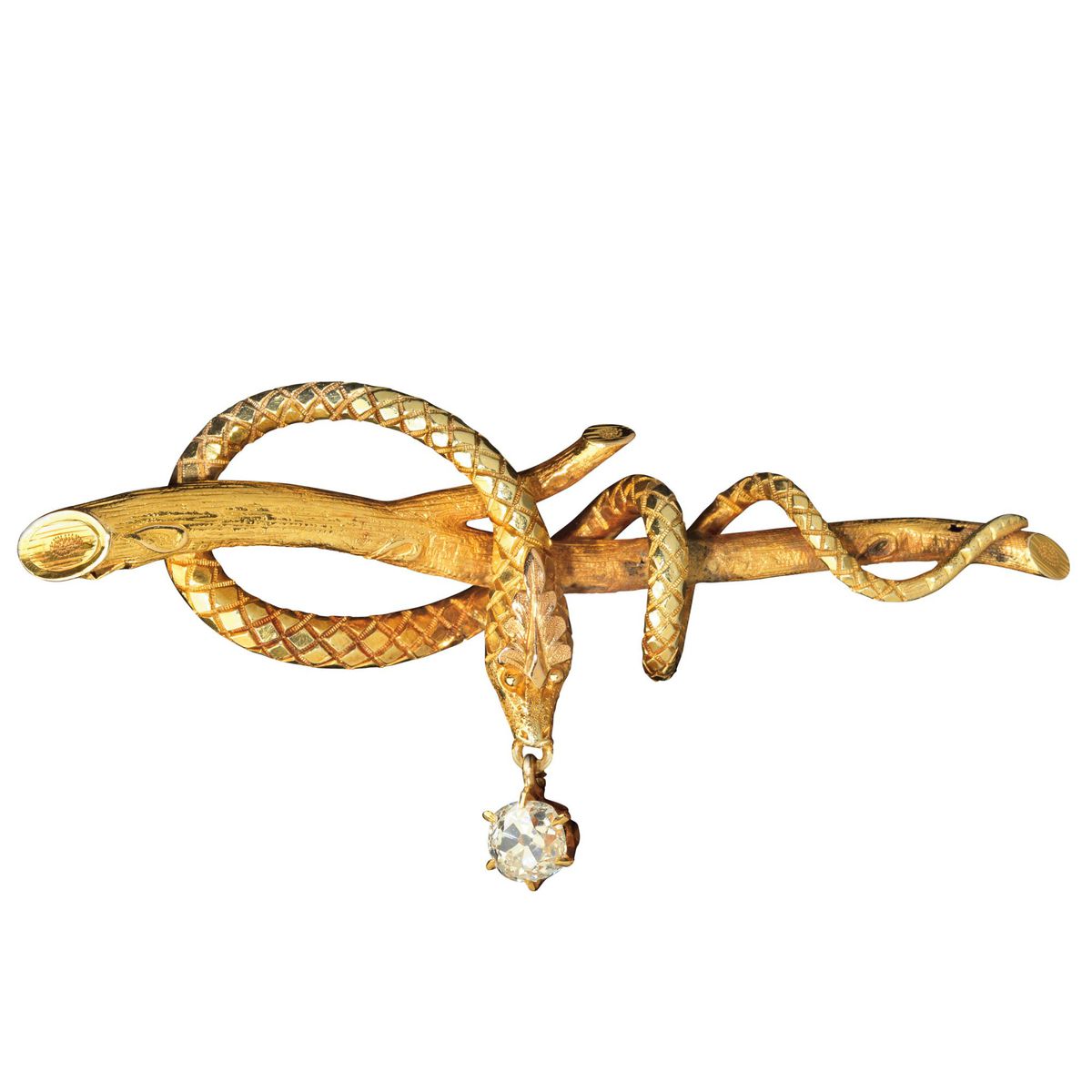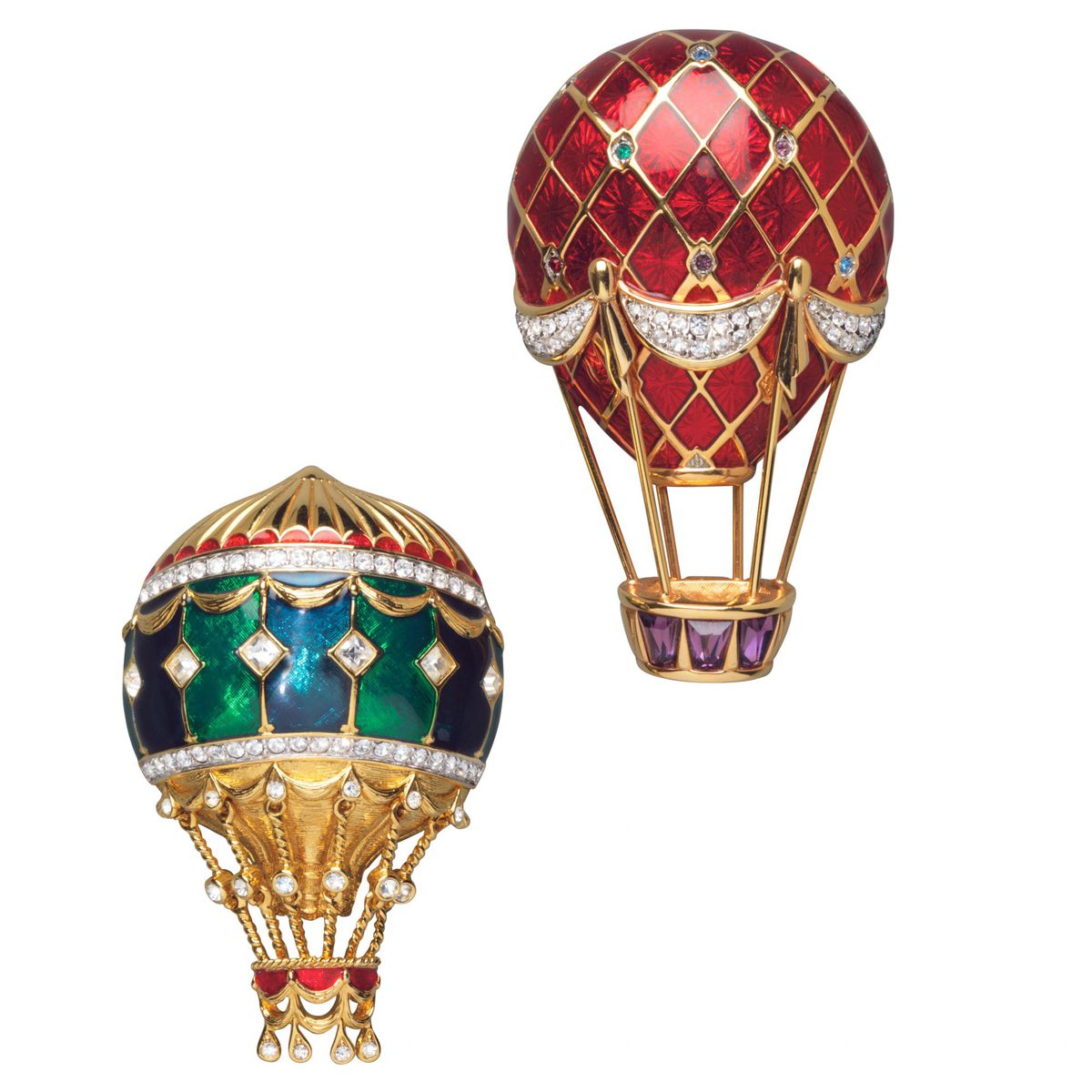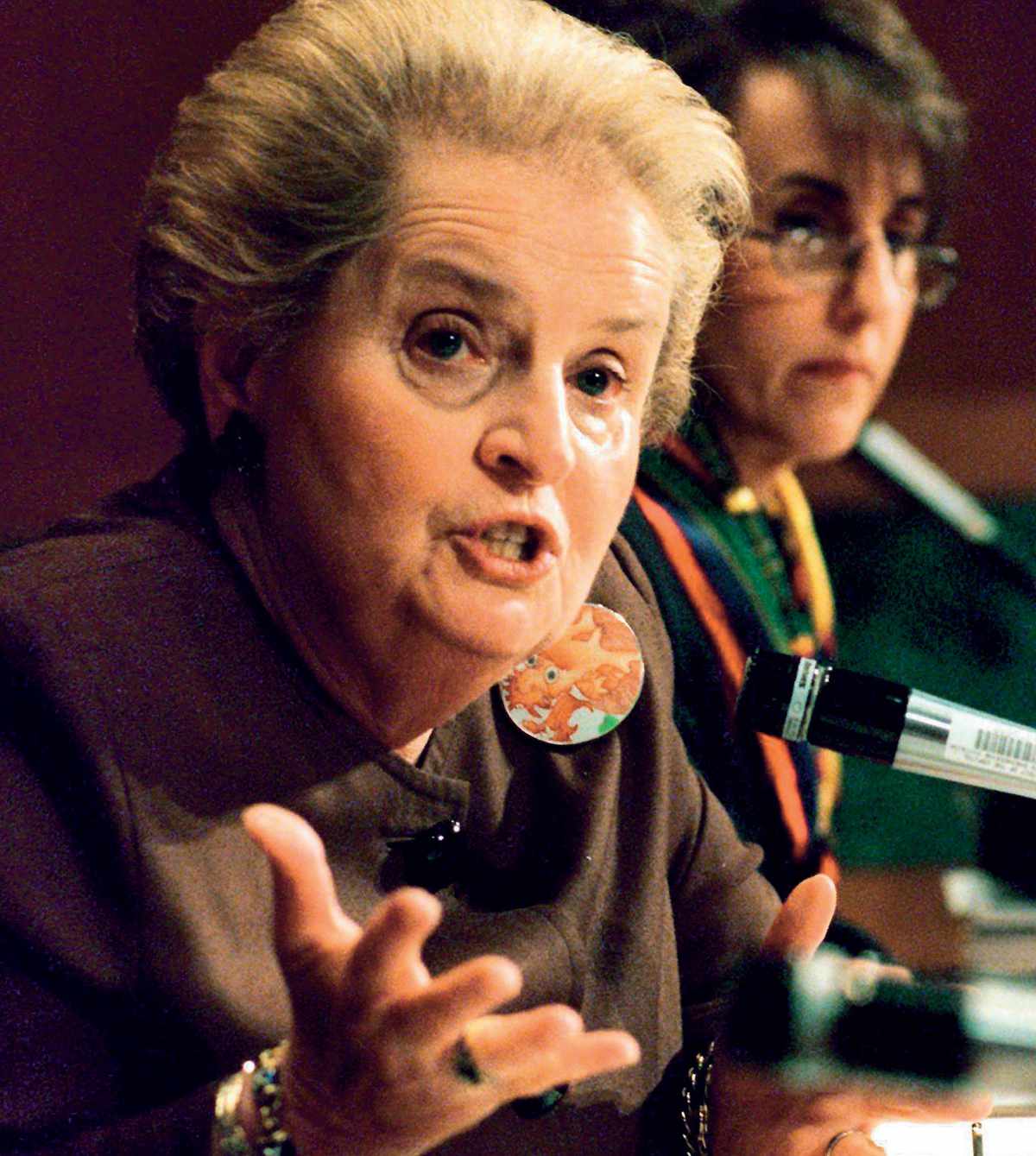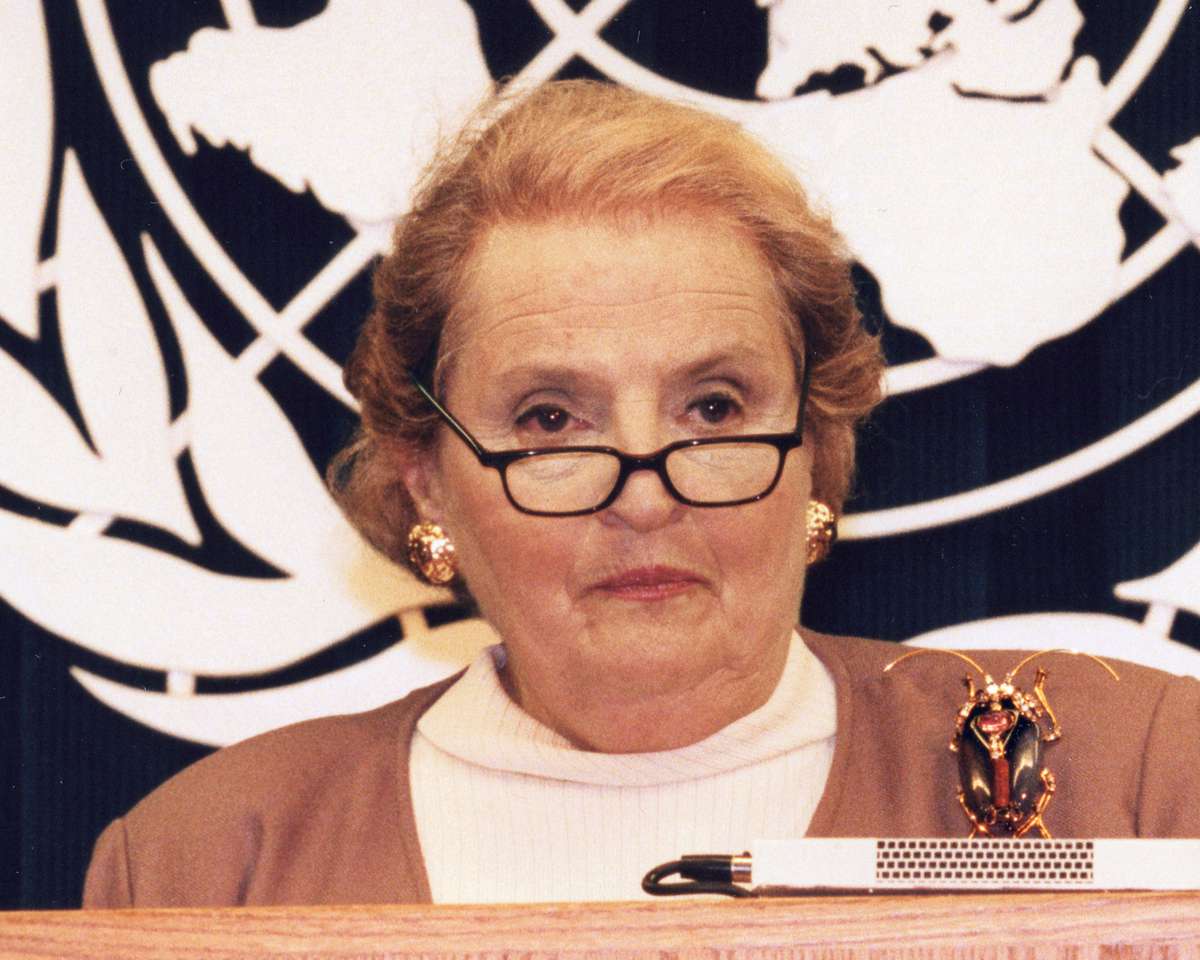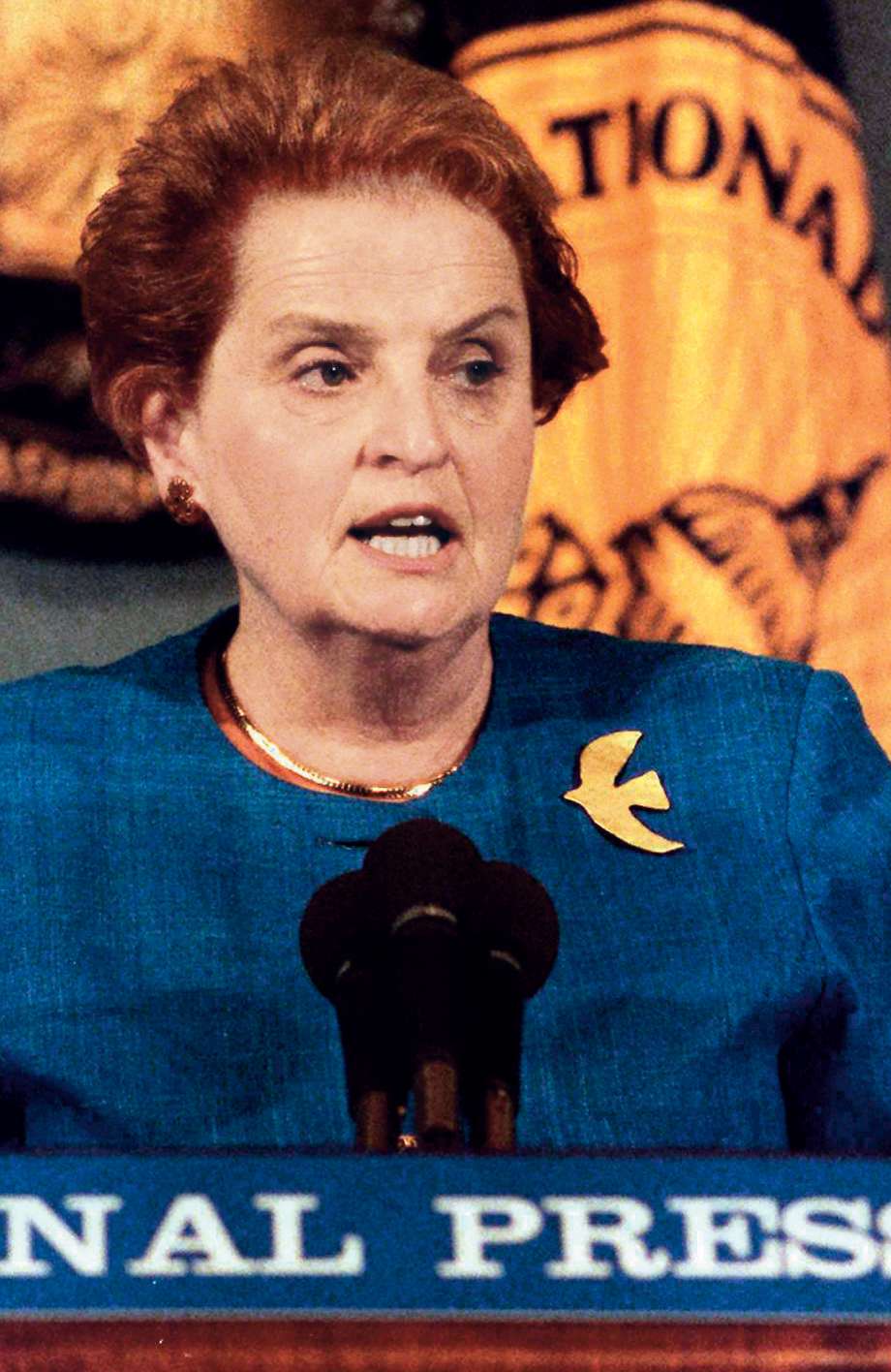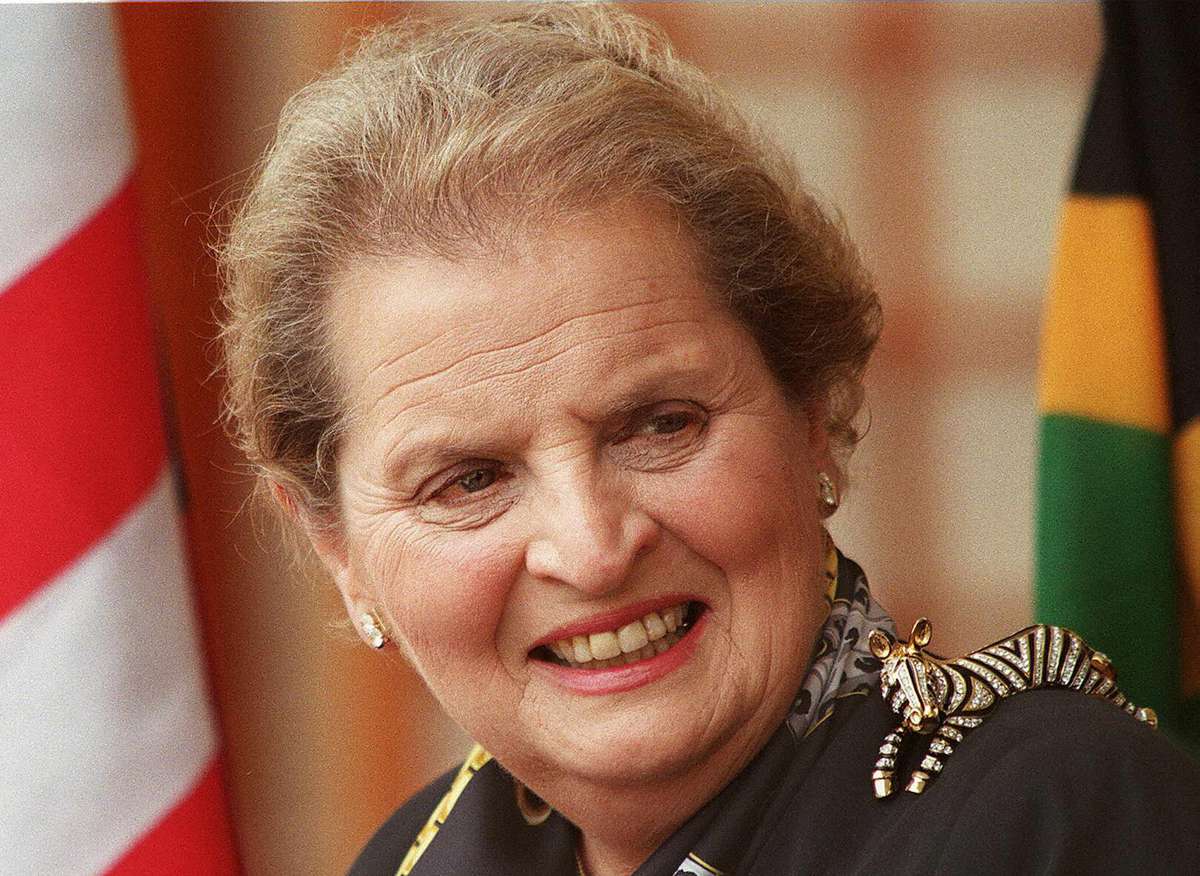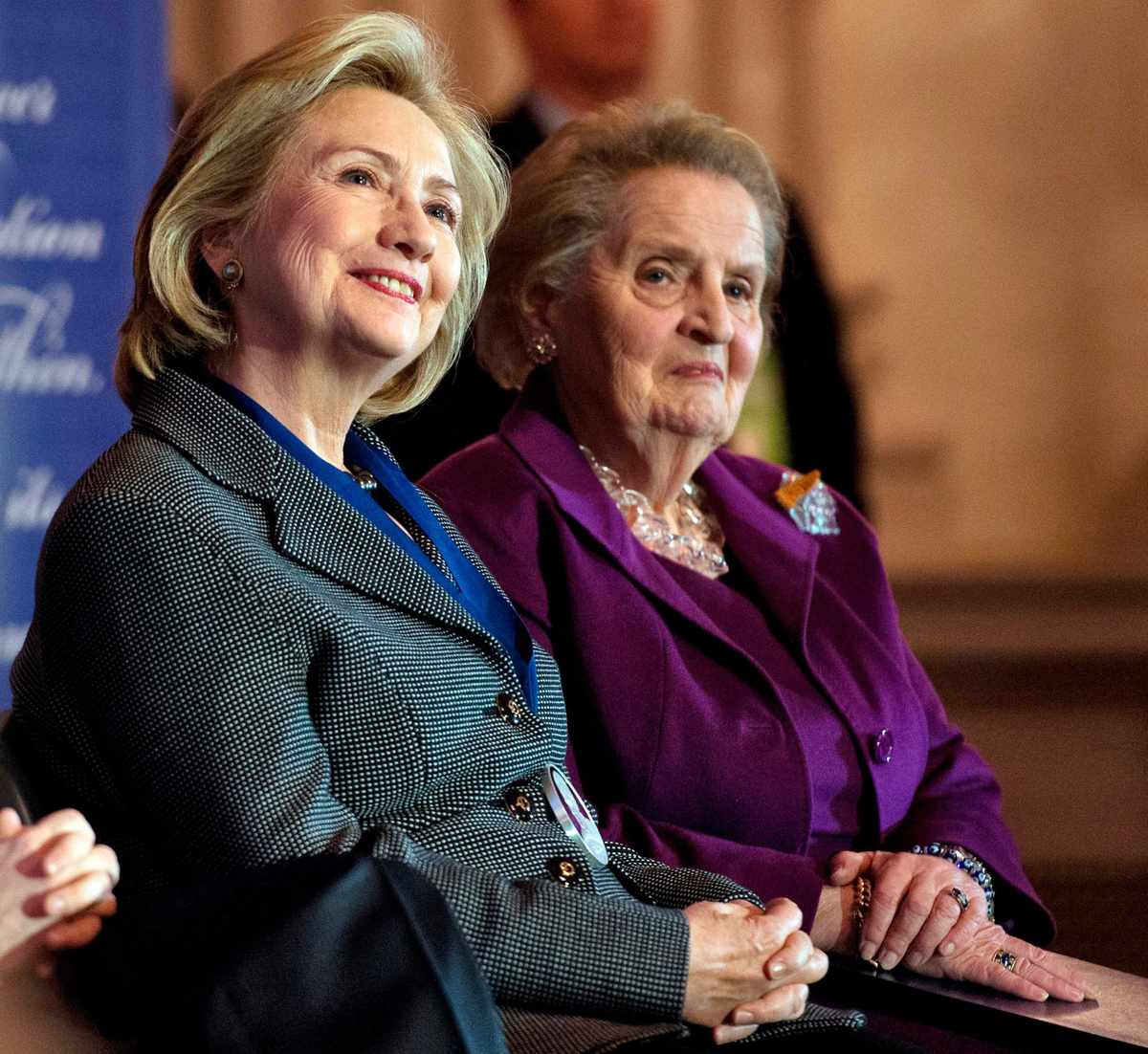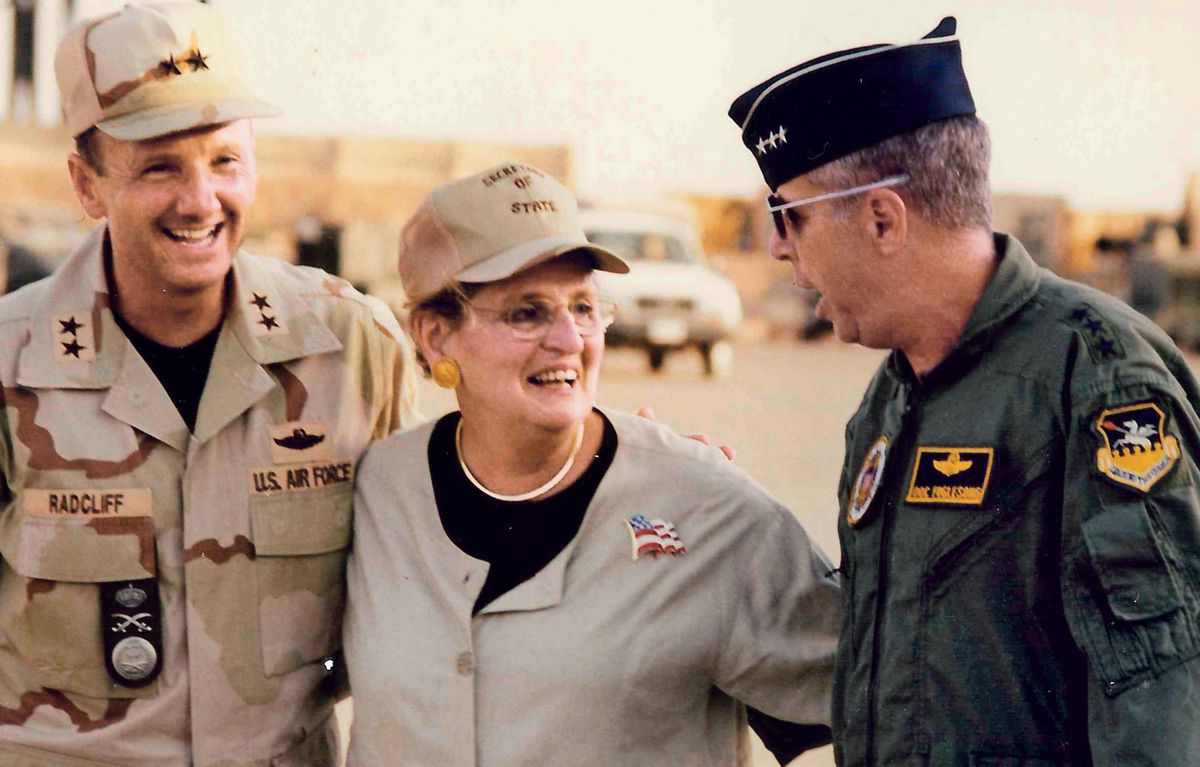As far back as I can remember, I have loved pins. My mother wore them often, so I grew up with the idea that they were a stylish and fun way to show off your personality. But it wasn't until I became the U.S. ambassador to the United Nations in 1993 that I realized jewelry could take on a whole new meaning.
Back then, there were not a lot of women who were part of international negotiations; in fact, I was the only one on the entire Security Council. The Persian Gulf War cease-fire [in 1991] had been translated into a series of sanctions resolutions, and it was my job to make sure that the sanctions stayed on. In doing so, I criticized [Iraqi dictator] Saddam Hussein practically every day, which he deserved, because he'd invaded Kuwait and was refusing to comply with the resolutions.
All of a sudden, a poem came out in the [government-controlled] Iraqi press that compared me to many things, among them an "unparalleled serpent." It reminded me of a snake pin I had at home, so when I was scheduled to meet with Iraqi officials again, I decided that I would wear it. As I was coming out of the meeting, there was a huddle of journalists, and one of them asked why I was wearing the snake pin. When the cameras zoomed in, I smiled and said it was just my way of sending a message.
Then I thought, well, this could be interesting. I'd always loved costume jewelry, but it had never occurred to me that a pin could also be used as a diplomatic symbol until that exact moment. So I started shopping for more.
On good days, when I wanted to project prosperity and happiness, I'd put on suns, ladybugs, flowers, and hot-air balloons that signified high hopes. On bad days, I'd reach for spiders and carnivorous animals. If the progress was slower than I liked during a meeting in the Middle East, I'd wear a snail pin. And when I was dealing with crabby people, I put on a crab. Other ambassadors started to notice, and whenever they asked me what I was up to on any given day, I would tell them, "Read my pins."
“When I was dealing with crabby people, I put on a crab.”
When I became secretary of state [in 1997], I became more deliberate in the way that I used the symbolism of my pins. I was representing the United States, so it was important that I looked dignified, but I also loved dressing like a woman, and the pins helped inject some humor, personality, and messaging into what were very serious times. And I must admit, I had a lot of fun with it. Especially trying to figure out to what extent my message was received.
There was a story behind every choice. I wore a bee when I was talking to [president of the Palestinian Authority] Yasser Arafat, because bees sting and I needed to deliver a sharp message. And when we found out that the Russians had been bugging the State Department, we did what diplomats do, which is démarche Moscow. But the next time I met with the Russian foreign minister, I wore a huge bug pin, and he knew exactly what I was referencing.
Sometimes my pins themselves would become a part of the conversation. Queen Elizabeth II often wears pins too, and since we have that in common, I sent her a note about it. But there was one particular time I really made a mistake with something that I wore. It had to do with a funny picture taken of President [Bill] Clinton, Secretary of Defense Bill Cohen, and me in the green room at the 50th anniversary of NATO [in 1999]. We were doing the "see no evil, hear no evil, speak no evil" gestures, and though we looked like crazy people, the picture ended up in Time magazine.
Later on, I came across a pin of three monkeys doing the same gesture, so I decided that I was going to wear it when we went to Moscow in 2000 for a summit conference. When we were walking in, President [Vladimir] Putin said to President Clinton, "We always notice what pins Secretary Albright wears." And then he turned to me and asked, "So why are you wearing the monkeys?" At which point I said, "Because I think your policy in Chechnya is evil." He was furious, for good reason. And President Clinton looked at me and said, "Are you out of your mind? You're America's chief diplomat, and you just screwed up the whole summit."
That didn't go over well, but most people responded positively to the signals I was sending. One of my favorite pins was a gold dove given to me by Leah Rabin [widow of Israeli prime minister Yitzhak Rabin, who was assassinated in 1995]. I started wearing it whenever I was giving speeches on the Middle East. Later, when I was in Jerusalem, she sent a necklace that had gold doves on it with a note that said, "It takes more than one dove to make peace in the Middle East."
There have been so many other meaningful ones over the years — the vintage eagle that I wore when I took the oath of office as secretary of state, the zebra I wore with [President] Nelson Mandela in South Africa, the beautiful amethyst pin given to me by a retired military service member who earned two Purple Hearts. I also have a series of pins that celebrate women's issues. One is a glass ceiling pin that has obvious symbolism. It is important to me, not just for the things that I was able to do [as the first female secretary of state], but also I wore it when Secretary [Hillary] Clinton was running for president [in 2016]. It shows the glass ceiling in its ideal condition — which is shattered.
People often ask how many pins I've collected, and I really don't know. There were more than 200 in the exhibit of my pins at [N.Y.C.'s] Museum of Arts and Design [in 2009]. And since then, people have given me probably another couple of hundred. With everything going on in the world, I've been wearing my Statue of Liberty pin the most lately because there is a great need for us to be generous in how we welcome people to this country right now. I've also been wearing a globe with an angel sitting on top of it, which points out the responsibilities we all have to one another as a world.
One of the main reasons I started wearing pins is that I've always wanted to make foreign policy less foreign. The pins are something people can identify with that doesn't sound like a textbook. And that's why I'm now donating them to the National Museum of American Diplomacy at the State Department. For me, they were always just a way I could communicate with people. Who knew a little inanimate object could say so much.
Albright's book Read My Pins: Stories from a Diplomat's Jewel Box is available now.
For more stories like this, pick up the November issue of InStyle, available on newsstands, on Amazon, and for digital download Oct. 22nd.
Source: Read Full Article

